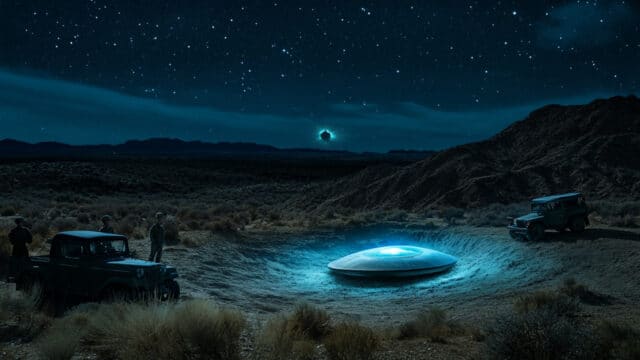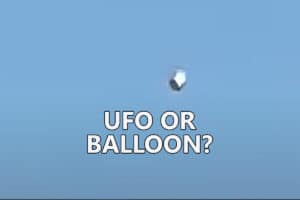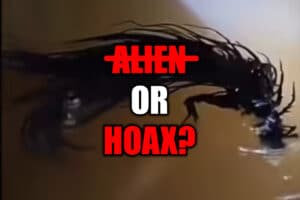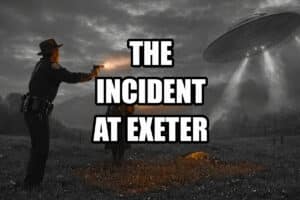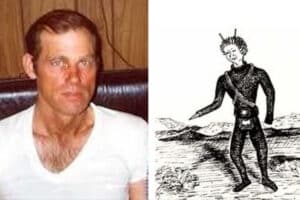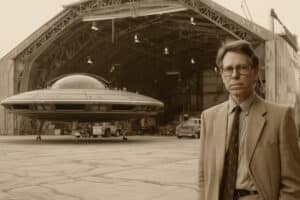Recent claims by UFO researcher and lawyer Daniel Sheehan have reignited speculation about humanity’s ability to interact with unidentified aerial phenomena (UAP). According to Sheehan, the U.S. government developed sophisticated technology during World War II capable of disabling and grounding extraterrestrial craft, with electromagnetic pulses (EMPs) from nuclear testing playing a pivotal role. Backed by an anonymous U.S. Army veteran, these assertions point to a secretive history of UAP recoveries, including the infamous Roswell incident. Here, we explore these claims, their historical context, and their implications for our understanding of UAP technology.
The Claim: WWII-Era UFO-Disablement Technology
Sheehan, a prominent figure in UFO disclosure efforts, has stated that the U.S. military developed “extraordinarily powerful technology” to force UAP craft to the ground. Speaking on the Julian Dorsey podcast, he described a system that could disable extraterrestrial vehicles, leading to the recovery of intact craft. An anonymous Army veteran, verified by The Daily Star, corroborated this, claiming the technology emerged during WWII after nuclear tests revealed that EMPs could disrupt UAP systems. “It was used in combination with radar to identify and down craft,” the veteran told The Daily Star. “Some were intact, and others were damaged or destroyed. Roswell is one such instance.”
These claims align with earlier assertions by researcher Chuck Wade, who, at the 2011 Aztec UFO Symposium, alleged that high-powered radar sites in New Mexico—located in El Vado, near the Continental Divide, and in Moriarty—were used to down UAPs between 1945 and 1948. The convergence of nuclear testing and radar technology during this period, particularly around the Trinity test in 1945, is cited as a catalyst for these developments.
Nuclear Testing and EMPs: A UAP Connection?
The connection between nuclear activity and UAP sightings is well-documented. Since the 1940s, numerous reports have linked UAP activity to nuclear facilities, from the Manhattan Project sites to modern nuclear carrier strike groups. Robert Hastings, author of UFOs and Nukes: Extraordinary Encounters at Nuclear Weapons Sites, has interviewed over 160 veterans who witnessed UAPs near nuclear sites, including Malmstrom Air Force Base in 1967, where missiles became inoperative as a glowing red object hovered overhead.
Sheehan’s claim suggests that EMPs, a byproduct of nuclear detonations, may have inadvertently disrupted UAP propulsion systems, revealing a vulnerability. The veteran’s statement that radar was combined with EMP effects to target craft points to a deliberate weaponization of this discovery. This theory is bolstered by historical accounts of UAP crashes in New Mexico during the late 1940s, a period of intense nuclear testing and radar development.
Never Miss An Issue!
Newsletter subscribers get insider access to the latest paranormal posts!
Your email is safe with us and you can unsubscribe at any time!
Roswell and Beyond: Evidence of Recoveries?
The Roswell incident of 1947 is often cited as a cornerstone of UAP recovery claims. Sheehan and the anonymous veteran assert that Roswell was not an isolated crash but part of a series of deliberate downings using EMP and radar technology. The U.S. Air Force’s 1994 report attributed Roswell debris to Project MOGUL, a secret balloon program monitoring Soviet nuclear tests, but UFO researchers argue this explanation dismisses eyewitness accounts of non-human craft and bodies.
Other alleged crash sites in New Mexico, investigated by Wade and others, suggest a pattern of recoveries during the post-WWII era. These incidents coincide with the U.S. military’s rapid advancements in radar and nuclear technology, raising questions about whether the government capitalized on UAP vulnerabilities. Our article on UAP crash retrievals at ParaRational.com delves deeper into these historical cases.
Skepticism and Counterarguments
Despite these claims, skepticism remains. Critics argue that Sheehan’s assertions lack concrete evidence, relying on anecdotal accounts and unverified sources. The anonymous veteran’s testimony, while compelling, cannot be independently corroborated. Mainstream scientists, including astrophysicist Leon Golub, suggest that UAP sightings near nuclear sites may have prosaic explanations, such as atmospheric phenomena or classified military projects.
The U.S. government has consistently denied possessing extraterrestrial technology. A 1997 Pentagon statement explicitly rejected claims of harboring UAP remains, and recent Pentagon reports attribute most UAP sightings to “readily explainable sources.” However, the establishment of the All-domain Anomaly Resolution Office (AARO) in 2022 to investigate UAPs suggests ongoing interest in these phenomena.
Implications: Act of War or Scientific Breakthrough?
Sheehan has raised concerns that using technology to down UAPs could be perceived as an act of war by extraterrestrial entities, especially since UAPs have reportedly disabled U.S. nuclear missiles, which the military viewed as hostile. This dynamic hints at a high-stakes technological arms race, with both human and non-human actors adapting to each other’s capabilities.
If true, the development of UAP-disablement technology during WWII would represent a monumental scientific achievement, potentially involving reverse-engineered alien systems. Figures like Bob Lazar, who claimed to have worked on alien craft at Area 51, have long alleged that the U.S. possesses advanced propulsion technologies derived from UAPs. Explore more on reverse-engineering theories at ParaRational.com.
What’s Next for UAP Disclosure?
The timing of Sheehan’s claims is notable, with speculation about a potential “huge UFO announcement” following political shifts in the U.S. The AARO’s ongoing investigations and congressional interest in UAP whistleblowers, including David Grusch, suggest that more revelations may be forthcoming. For updates on UAP disclosure, check our coverage at ParaRational.com.
While Sheehan’s assertions are provocative, they underscore the need for transparency and rigorous investigation. Whether the U.S. developed UAP-downing technology during WWII or not, the persistent link between nuclear activity and UAP sightings demands further scrutiny. As we await declassified records or verifiable evidence, the mystery of humanity’s interactions with UAPs remains as tantalizing as ever.

